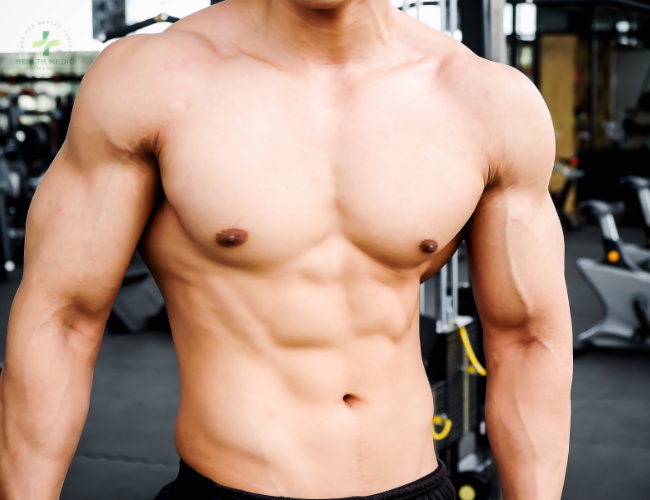Explore five key health-related components of fitness that are crucial for improving and sustaining overall health and vitality.

Fitness is a vital aspect of overall well-being and is instrumental in maintaining a healthy lifestyle. While many people associate fitness solely with physical appearance or athletic performance, it encompasses much more. True fitness is about achieving and maintaining a balance of various health-related components.
Cardiovascular Endurance

Cardiovascular endurance, also known as cardiorespiratory endurance, refers to the ability of the cardiovascular and respiratory systems to supply oxygen and nutrients to the muscles during prolonged physical activity. This component is crucial as it directly affects the efficiency of the heart, lungs, and blood vessels. Engaging in activities that elevate the heart rate, such as jogging, cycling, or swimming, can
- Maintain or improve the efficient delivery and uptake of oxygen to your body’s systems
- Enhance cellular metabolism
- Ease the physical challenges of everyday life
Muscular Strength

While muscular endurance refers to how fatigue-resistant a particular muscle group is, muscular strength refers to the amount of force a specific muscle group can produce in one, all-out effort. In strength training terms, it’s your one-rep max.
Like muscular endurance, muscular strength is muscle group-specific. In other words, you may have strong glutes but comparatively weak deltoids; or powerful pectoral muscles but comparatively weak hamstrings.
Muscular Endurance

While muscular strength focuses on the amount of force muscles can produce, muscular endurance revolves around the ability of muscles to sustain repetitive contractions over time. It allows us to engage in activities that require repetitive movements, such as running, cycling, or performing manual labor without getting fatigued quickly. Regular endurance exercises not only build muscular stamina but also support joint health and reduce the risk of overuse injuries.
Long-distance cycling offers a clear example. To pedal a bike over a long distance, often up steep inclines, cyclists must develop fatigue-resistant muscles in their legs and glutes. These are evidence of a high level of muscular endurance.
Likewise, holding a plank to develop core strength is another example of muscular endurance using isometric exercise. The longer you can contract your abdominals and keep your body in a steady position, the greater endurance you have through your hips, abs, and shoulders.
Flexibility

Flexibility refers to the range of motion around a given joint without pain.10 Like muscular strength and endurance, flexibility is joint-specific. For instance, you may have very flexible shoulders but tight and inflexible hamstrings or hips.
Flexibility is essential at any age. It plays a role in unhindered movement and can affect your balance, coordination, and agility. Maintaining a full range of motion through your major joints can reduce the likelihood of injury and enhance athletic performance.
As you get older, the importance of flexibility becomes even more apparent. While completely stopping the aging process isn’t possible, protecting your joints and maintaining mobility can help keep you spry well into your later years.
How to Increase Flexibility
There are simple ways you can work flexibility exercises into your day:
Static stretching, where you hold a stretch for 10 to 30 seconds at a time
- Workouts that take you through dynamic stretching exercises, such as barre, yoga, tai chi, or Pilates
- Active stretching, such as lifting your leg and holding it there, uses the contraction of the opposing muscle to relax the muscle being stretched.
- Passive stretching also called relaxed stretching, is where you assume a stretch position and hold it with the assistance of another part of your body, a partner, or an apparatus, like a strap.
- Isometric stretching, a type of static stretching, uses resistance to alternate between relaxing and contracting the muscle.
Body Composition

Body composition refers to the proportion of fat, muscle, bone, and other tissues in the body. Achieving a healthy body composition is essential for overall health. High levels of body fat can lead to numerous health issues, including obesity, diabetes, and cardiovascular problems. Regular exercise, a balanced diet, and strength training play crucial roles in maintaining a healthy body composition, reducing excess fat, and increasing muscle mass.
Conclusion
In conclusion, a well-rounded fitness routine should encompass these five health-related components of fitness: cardiovascular endurance, muscular strength, muscular endurance, flexibility, and body composition. Balancing these elements is essential for improving physical health, preventing chronic diseases, and enhancing overall well-being.
Remember that fitness is not a one-size-fits-all approach, and it’s essential to tailor your exercise routine to your individual needs and abilities. Before starting any new fitness program, consult with a healthcare professional or a certified fitness trainer to ensure that it aligns with your health goals and medical history. By incorporating these components into your daily routine, you can embark on a journey toward a healthier and more fulfilling life.
By VeryWellfit



















